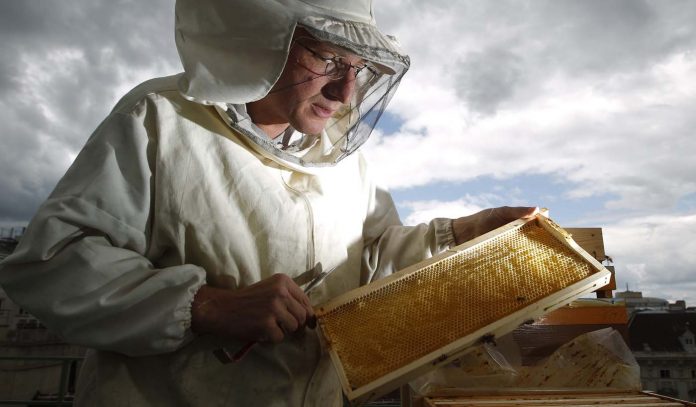
ONTARIO, CANADA- Local apiarists have reported an increasing percentage of dead bees, compared to the last couple of years, in spite recently implemented regulations preventing the use of a controversial seed-coating pesticide.
It is no coincidence that the particular losses took place during spring planting and are most likely correlated with exposure to pesticides.
Belmont area beekeeper Albert Devries, is confident that the reason behind the incidents is “absolutely, without a doubt” neonicotinoids, which is a type of pesticides applied on corn and soybean seeds to stave off insects or diseases before the plants come out.
It is worth noting that Mr. Devries is the owner of 950 local hives, of which around 350 of them have been victims of the aforementioned threat.
This is the first season that the local apiarists had to work with the new regulations, though Ontario Beekeepers’ Association claims that the death rate has been increased by double, compared to the past two years, when those protective measurements were not applicable yet.
Furthermore, according to the Association, where Mr. Dervies is director, proving that the culprit in this occasion is pesticide, is tricky, at the moment, since the federal pesticide regulator is no longer receiving dead bees for neonics residue testing.
He further adds that the Health Canada’s Pest Management Regulatory Agency urges beekeepers to report the precise, if possible, number, date and location of such instances, though the federal regulator won’t accept any bee carcasses or taking respective samples for analysis as it did a few years back.
The agency was reached for a comment on Thursday, though the spokesperson was not able to confirm if there are any new improved protocols currently under development or mention the amount of reported bees’ death.
Mr. Dervies also said that the number of dead bees that account for each hive was ranging from 100 to 500, while the date he discovered them was around April 20.
I just want to understand it. There’s been too much polarization and I would like to build bridges and talk because none of these farmers go out and say, ‘Hey, today I’m going to kill some bees,’. I don’t want to stop farmers from doing their job. I just want to do my job, too.
Mark Brock, the chairperson of Grain Farmers of Ontario, commented that, from his end, it is difficult to determine whether neonics were indeed a relevant factor that had contributed to the event.
He stated that, in his side’s defense, farmers are complying with the new requirements, though beekeepers haven’t been ordered to take relevant courses or prove that they are using the most efficient practices as well.
Via: London Free Press












This is the first planting season with the new Neonicotinoid regulations, give it a few years.